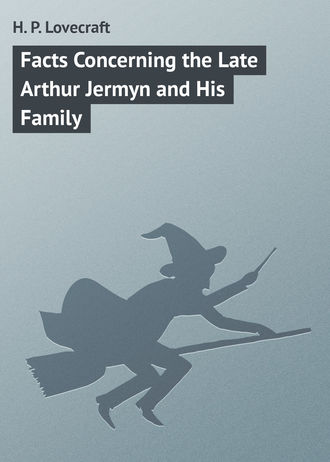
Говард Филлипс Лавкрафт
Facts Concerning the Late Arthur Jermyn and His Family
Of the reality of the jungle city described by old Sir Wade, Arthur Jermyn had no further doubt; and was hardly astonished when early in 1912 he came upon what was left of it. Its size must have been exaggerated, yet the stones lying about proved that it was no mere Negro village. Unfortunately no carvings could be found, and the small size of the expedition prevented operations toward clearing the one visible passageway that seemed to lead down into the system of vaults which Sir Wade had mentioned. The white apes and the stuffed goddess were discussed with all the native chiefs of the region, but it remained for a European to improve on the data offered by old Mwanu. M. Verhaeren, Belgian agent at a trading-post on the Congo, believed that he could not only locate but obtain the stuffed goddess, of which he had vaguely heard; since the once mighty N’bangus were now the submissive servants of King Albert’s government, and with but little persuasion could be induced to part with the gruesome deity they had carried off. When Jermyn sailed for England, therefore, it was with the exultant probability that he would within a few months receive a priceless ethnological relic confirming the wildest of his great – great-great-grandfather’s narratives – that is, the wildest which he had ever heard. Countrymen near Jermyn House had perhaps heard wilder tales handed down from ancestors who had listened to Sir Wade around the tables of the Knight’s Head.
Arthur Jermyn waited very patiently for the expected box from M. Verhaeren, meanwhile studying with increased diligence the manuscripts left by his mad ancestor. He began to feel closely akin to Sir Wade, and to seek relics of the latter’s personal life in England as well as of his African exploits. Oral accounts of the mysterious and secluded wife had been numerous, but no tangible relic of her stay at Jermyn House remained. Jermyn wondered what circumstance had prompted or permitted such an effacement, and decided that the husband’s insanity was the prime cause. His great-great-great-grandmother, he recalled, was said to have been the daughter of a Portuguese trader in Africa. No doubt her practical heritage and superficial knowledge of the Dark Continent had caused her to flout Sir Wade’s tales of the interior, a thing which such a man would not be likely to forgive. She had died in Africa, perhaps dragged thither by a husband determined to prove what he had told. But as Jermyn indulged in these reflections he could not but smile at their futility, a century and a half after the death of both his strange progenitors.
In June, 1913, a letter arrived from M. Verhaeren, telling of the finding of the stuffed goddess. It was, the Belgian averred, a most extraordinary object; an object quite beyond the power of a layman to classify. Whether it was human or simian only a scientist could determine, and the process of determination would be greatly hampered by its imperfect condition. Time and the Congo climate are not kind to mummies; especially when their preparation is as amateurish as seemed to be the case here. Around the creature’s neck had been found a golden chain bearing an empty locket on which were armorial designs; no doubt some hapless traveller’s keepsake, taken by the N’bangus and hung upon the goddess as a charm. In commenting on the contour of the mummy’s face, M. Verhaeren suggested a whimsical comparison; or rather, expressed a humorous wonder just how it would strike his corespondent, but was too much interested scientifically to waste many words in levity. The stuffed goddess, he wrote, would arrive duly packed about a month after receipt of the letter.
The boxed object was delivered at Jermyn House on the afternoon of August 3, 1913, being conveyed immediately to the large chamber which housed the collection of African specimens as arranged by Sir Robert and Arthur. What ensued can best be gathered from the tales of servants and from things and papers later examined. Of the various tales, that of aged Soames, the family butler, is most ample and coherent. According to this trustworthy man, Sir Arthur Jermyn dismissed everyone from the room before opening the box, though the instant sound of hammer and chisel showed that he did not delay the operation. Nothing was heard for some time; just how long Soames cannot exactly estimate, but it was certainly less than a quarter of an hour later that the horrible scream, undoubtedly in Jermyn’s voice, was heard. Immediately afterward Jermyn emerged from the room, rushing frantically toward the front of the house as if pursued by some hideous enemy. The expression on his face, a face ghastly enough in repose, was beyond description. When near the front door he seemed to think of something, and turned back in his flight, finally disappearing down the stairs to the cellar. The servants were utterly dumbfounded, and watched at the head of the stairs, but their master did not return. A smell of oil was all that came up from the regions below. After dark a rattling was heard at the door leading from the cellar into the courtyard; and a stable-boy saw Arthur Jermyn, glistening from head to foot with oil and redolent of that fluid, steal furtively out and vanish on the black moor surrounding the house. Then, in an exaltation of supreme horror, everyone saw the end. A spark appeared on the moor, a flame arose, and a pillar of human fire reached to the heavens. The house of Jermyn no longer existed.





